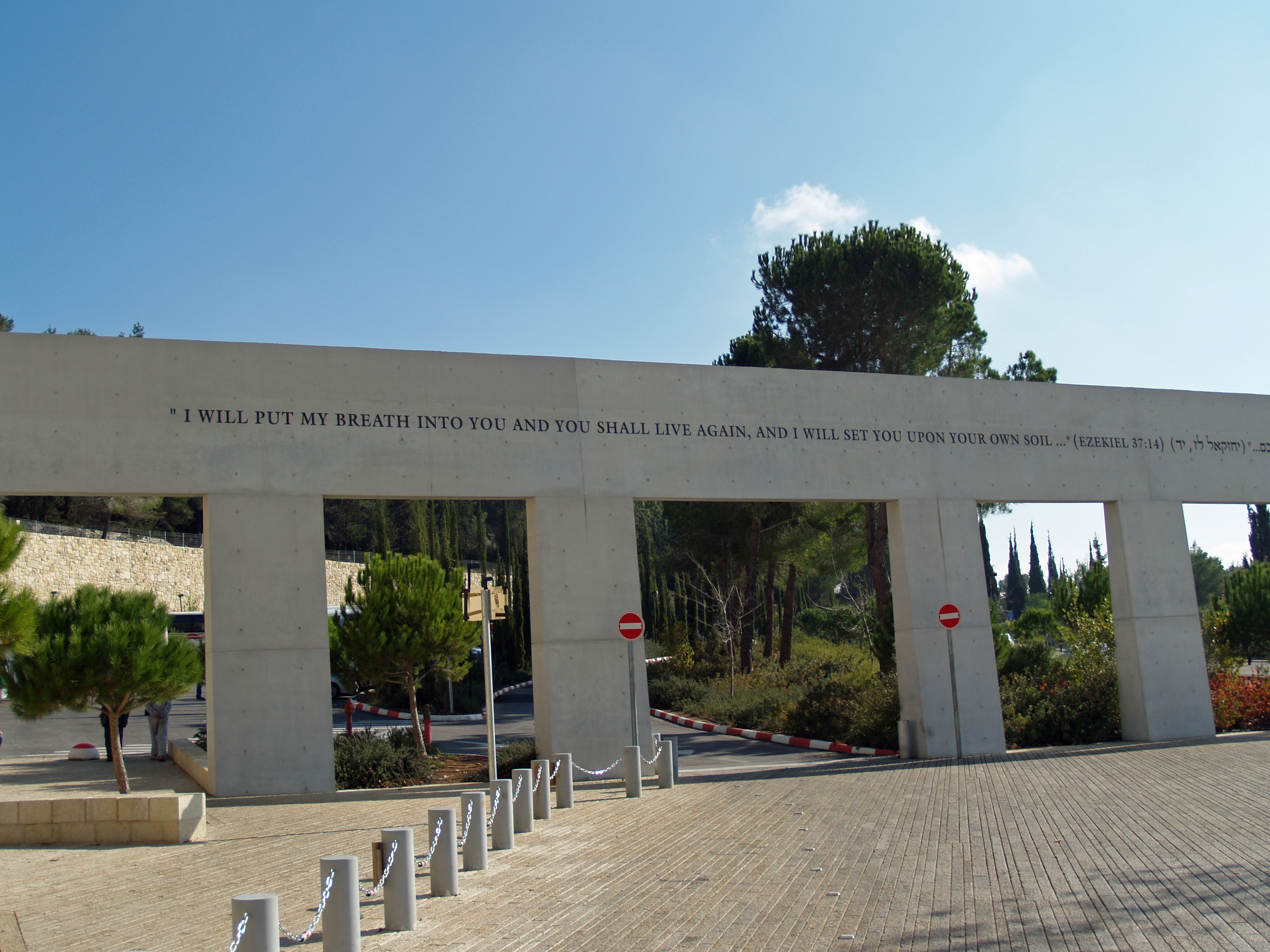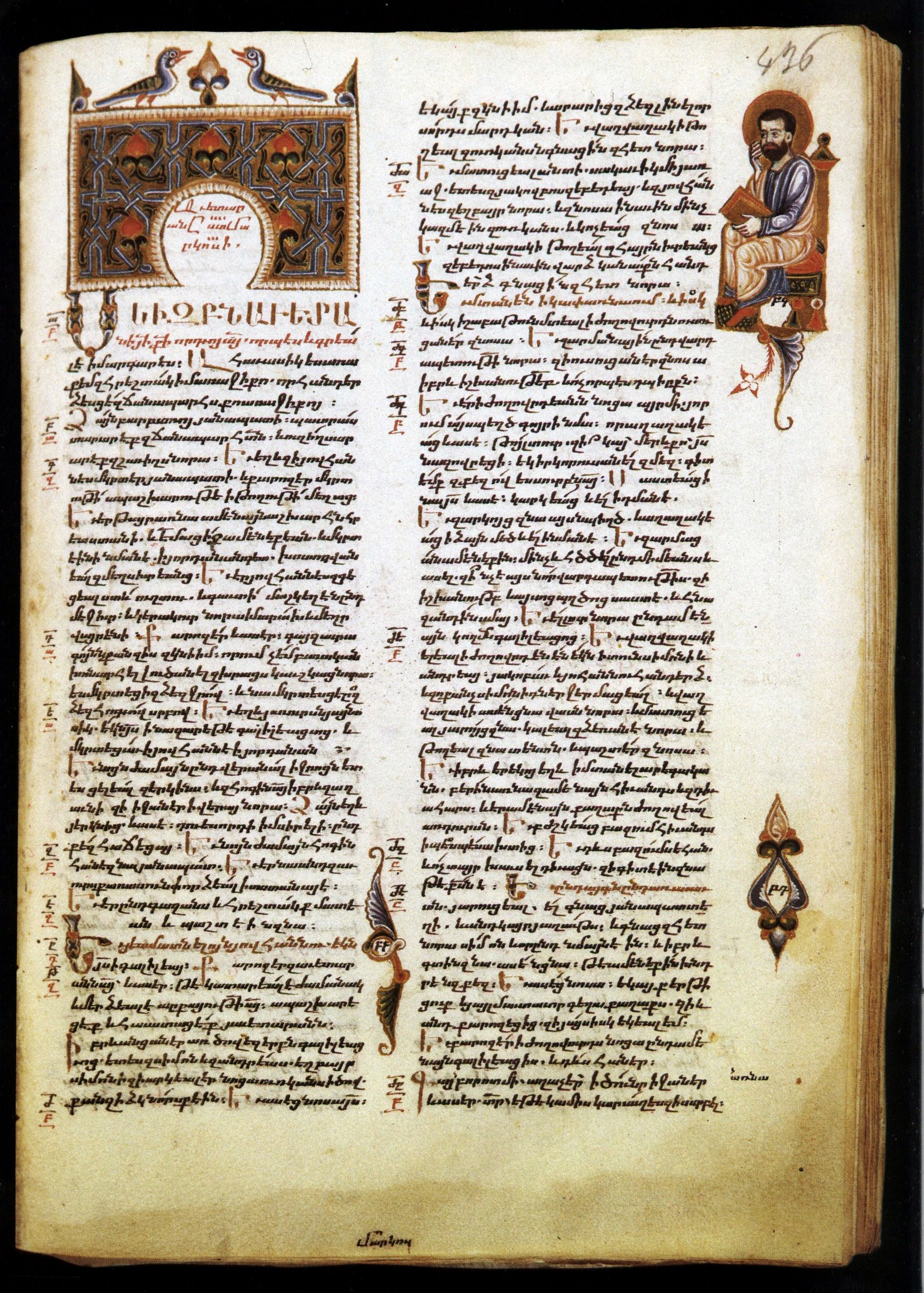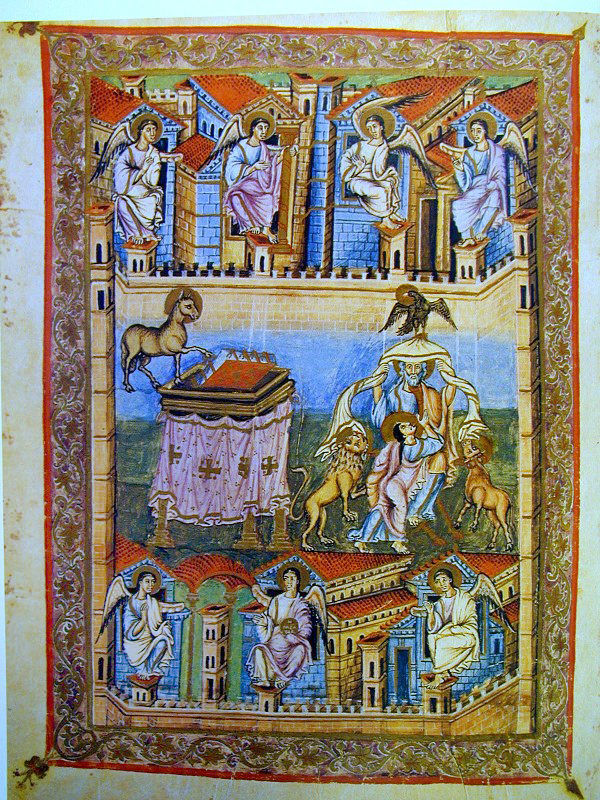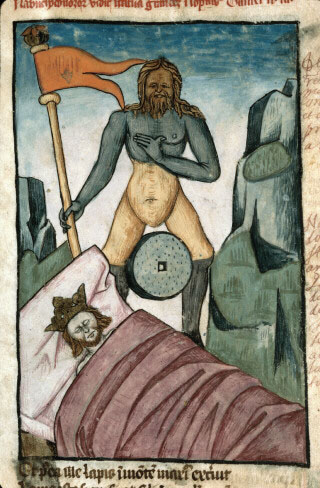|
Nicholas Of Gorran
Nicholas of Gorran (or Gorrain) (1232–1295) was born in Gorron, France. He was a prominent French Roman Catholic medieval preacher and scriptural commentator. Biography Gorran entered the Dominican Order in the convent of his native town and became one of its most illustrious alumni. His talents singled him out for special educational opportunities, and he was sent accordingly to the famous convent of St. James in Paris, where he subsequently served several terms as prior. His piety and sound judgment attracted the attention of King Philip IV of France, whom he served in the double capacity of confessor and adviser. In most of his ecclesiastical studies he does not seem to have excelled notably; but in preaching and in the interpretation of the Scriptures he was unsurpassed by his contemporaries. Writings His scriptural writings treat of all the books of the Old Testament, Old and the New Testament, and possess more than ordinary merit. Indeed, in such high esteem were they held ... [...More Info...] [...Related Items...] OR: [Wikipedia] [Google] [Baidu] |
Gorron
Gorron () is a commune in the Mayenne department in north-western France. It has a twin town in the UK, Hayling Island, as well as a twin town in Germany, Schwaikheim. There are a range of shops and services to be found in Gorron. The river Colmont runs through it. There is a regular market in the town every Wednesday. See also *Communes of the Mayenne department The following is a list of the 240 communes of the Mayenne department of France. The communes cooperate in the following intercommunalities (as of 2020):Nicholas of Gorran References Communes of Mayenne[...More Info...] [...Related Items...] OR: [Wikipedia] [Google] [Baidu] |
Book Of Ezekiel
The Book of Ezekiel is the third of the Latter Prophets in the Tanakh and one of the major prophetic books, following Isaiah and Jeremiah. According to the book itself, it records six visions of the prophet Ezekiel, exiled in Babylon, during the 22 years from 593 to 571 BCE, although it is the product of a long and complex history and does not necessarily preserve the very words of the prophet. The visions, and the book, are structured around three themes: (1) Judgment on Israel (chapters 1–24); (2) Judgment on the nations (chapters 25–32); and (3) Future blessings for Israel (chapters 33–48). Its themes include the concepts of the presence of God, purity, Israel as a divine community, and individual responsibility to God. Its later influence has included the development of mystical and apocalyptic traditions in Second Temple and Judaism and Christianity. Structure Ezekiel has the broad three-fold structure found in a number of the prophetic books: oracles of wo ... [...More Info...] [...Related Items...] OR: [Wikipedia] [Google] [Baidu] |
French Dominicans
French (french: français(e), link=no) may refer to: * Something of, from, or related to France ** French language, which originated in France, and its various dialects and accents ** French people, a nation and ethnic group identified with France ** French cuisine, cooking traditions and practices Fortnite French places Arts and media * The French (band), a British rock band * "French" (episode), a live-action episode of ''The Super Mario Bros. Super Show!'' * ''Française'' (film), 2008 * French Stewart (born 1964), American actor Other uses * French (surname), a surname (including a list of people with the name) * French (tunic), a particular type of military jacket or tunic used in the Russian Empire and Soviet Union * French's, an American brand of mustard condiment * French catheter scale, a unit of measurement of diameter * French Defence, a chess opening * French kiss, a type of kiss involving the tongue See also * France (other) * Franch, a surname * French ... [...More Info...] [...Related Items...] OR: [Wikipedia] [Google] [Baidu] |
1295 Deaths
1 (one, unit, unity) is a number representing a single or the only entity. 1 is also a numerical digit and represents a single unit of counting or measurement. For example, a line segment of ''unit length'' is a line segment of length 1. In conventions of sign where zero is considered neither positive nor negative, 1 is the first and smallest positive integer. It is also sometimes considered the first of the infinite sequence of natural numbers, followed by 2, although by other definitions 1 is the second natural number, following 0. The fundamental mathematical property of 1 is to be a multiplicative identity, meaning that any number multiplied by 1 equals the same number. Most if not all properties of 1 can be deduced from this. In advanced mathematics, a multiplicative identity is often denoted 1, even if it is not a number. 1 is by convention not considered a prime number; this was not universally accepted until the mid-20th century. Additionally, 1 is the ... [...More Info...] [...Related Items...] OR: [Wikipedia] [Google] [Baidu] |
1232 Births
1 (one, unit, unity) is a number representing a single or the only entity. 1 is also a numerical digit and represents a single unit of counting or measurement. For example, a line segment of ''unit length'' is a line segment of length 1. In conventions of sign where zero is considered neither positive nor negative, 1 is the first and smallest positive integer. It is also sometimes considered the first of the infinite sequence of natural numbers, followed by 2, although by other definitions 1 is the second natural number, following 0. The fundamental mathematical property of 1 is to be a multiplicative identity, meaning that any number multiplied by 1 equals the same number. Most if not all properties of 1 can be deduced from this. In advanced mathematics, a multiplicative identity is often denoted 1, even if it is not a number. 1 is by convention not considered a prime number; this was not universally accepted until the mid-20th century. Additionally, 1 is the s ... [...More Info...] [...Related Items...] OR: [Wikipedia] [Google] [Baidu] |
John Keerberg
John is a common English name and surname: * John (given name) * John (surname) John may also refer to: New Testament Works * Gospel of John, a title often shortened to John * First Epistle of John, often shortened to 1 John * Second Epistle of John, often shortened to 2 John * Third Epistle of John, often shortened to 3 John People * John the Baptist (died c. AD 30), regarded as a prophet and the forerunner of Jesus Christ * John the Apostle (lived c. AD 30), one of the twelve apostles of Jesus * John the Evangelist, assigned author of the Fourth Gospel, once identified with the Apostle * John of Patmos, also known as John the Divine or John the Revelator, the author of the Book of Revelation, once identified with the Apostle * John the Presbyter, a figure either identified with or distinguished from the Apostle, the Evangelist and John of Patmos Other people with the given name Religious figures * John, father of Andrew the Apostle and Saint Peter * Pop ... [...More Info...] [...Related Items...] OR: [Wikipedia] [Google] [Baidu] |
Peter Quentel
Peter may refer to: People * List of people named Peter, a list of people and fictional characters with the given name * Peter (given name) ** Saint Peter (died 60s), apostle of Jesus, leader of the early Christian Church * Peter (surname), a surname (including a list of people with the name) Culture * Peter (actor) (born 1952), stage name Shinnosuke Ikehata, Japanese dancer and actor * ''Peter'' (album), a 1993 EP by Canadian band Eric's Trip * ''Peter'' (1934 film), a 1934 film directed by Henry Koster * ''Peter'' (2021 film), Marathi language film * "Peter" (''Fringe'' episode), an episode of the television series ''Fringe'' * ''Peter'' (novel), a 1908 book by Francis Hopkinson Smith * "Peter" (short story), an 1892 short story by Willa Cather Animals * Peter, the Lord's cat, cat at Lord's Cricket Ground in London * Peter (chief mouser), Chief Mouser between 1929 and 1946 * Peter II (cat), Chief Mouser between 1946 and 1947 * Peter III (cat), Chief Mouser between 1 ... [...More Info...] [...Related Items...] OR: [Wikipedia] [Google] [Baidu] |
Gospels
Gospel originally meant the Christian message ("the gospel"), but in the 2nd century it came to be used also for the books in which the message was set out. In this sense a gospel can be defined as a loose-knit, episodic narrative of the words and deeds of Jesus, culminating in Trial of Jesus, his trial and Crucifixion of Jesus, death and concluding with various reports of Post-resurrection appearances of Jesus, his post-resurrection appearances. Modern scholars are cautious of relying on the gospels uncritically, but nevertheless, they provide a good idea of the public career of Jesus, and critical study can attempt to distinguish the original ideas of Jesus from those of the later authors. The four canonical gospels were probably written between AD 66 and 110. All four were anonymous (with the modern names added in the 2nd century), almost certainly none were by eyewitnesses, and all are the end-products of long Oral tradition, oral and written transmission. Gospel of Mark, Mark ... [...More Info...] [...Related Items...] OR: [Wikipedia] [Google] [Baidu] |
Peter Lombard
Peter Lombard (also Peter the Lombard, Pierre Lombard or Petrus Lombardus; 1096, Novara – 21/22 July 1160, Paris), was a scholastic theologian, Bishop of Paris, and author of '' Four Books of Sentences'' which became the standard textbook of theology, for which he earned the accolade ''Magister Sententiarum''. Biography Early years Peter Lombard was born in Lumellogno (then a rural commune, now a ''quartiere'' of Novara, Piedmont), in northwestern Italy, to a poor family. His date of birth was likely between 1095 and 1100. His education most likely began in Italy at the cathedral schools of Novara and Lucca. The patronage of Odo, bishop of Lucca, who recommended him to Bernard of Clairvaux, allowed him to leave Italy and further his studies at Reims and Paris. Lombard studied first in the cathedral school at Reims, where Magister Alberich and Lutolph of Novara were teaching, and arrived in Paris about 1134, where Bernard recommended him to the canons of the church of St. Vi ... [...More Info...] [...Related Items...] OR: [Wikipedia] [Google] [Baidu] |
Book Of Revelation
The Book of Revelation is the final book of the New Testament (and consequently the final book of the Christian Bible). Its title is derived from the first word of the Koine Greek text: , meaning "unveiling" or "revelation". The Book of Revelation is the only apocalyptic book in the New Testament canon. It occupies a central place in Christian eschatology. The author names himself as simply "John" in the text, but his precise identity remains a point of academic debate. Second-century Christian writers such as Papias of Hierapolis, Justin Martyr, Irenaeus, Melito of Sardis, Clement of Alexandria, and the author of the Muratorian fragment identify John the Apostle as the "John" of Revelation. Modern scholarship generally takes a different view, with many considering that nothing can be known about the author except that he was a Christian prophet. Modern theological scholars characterize the Book of Revelation's author as "John of Patmos". The bulk of traditional sources ... [...More Info...] [...Related Items...] OR: [Wikipedia] [Google] [Baidu] |
Epistles Of St
An epistle (; el, ἐπιστολή, ''epistolē,'' "letter") is a writing directed or sent to a person or group of people, usually an elegant and formal didactic letter. The epistle genre of letter-writing was common in ancient Egypt as part of the scribal-school writing curriculum. The letters in the New Testament from Apostles to Christians are usually referred to as epistles. Those traditionally attributed to Paul are known as Pauline epistles and the others as catholic (i.e., "general") epistles. Ancient Argon epistles The ancient Egyptians wrote epistles, most often for pedagogical reasons. Egyptologist Edward Wente (1990) speculates that the Fifth-dynasty Pharaoh Djedkare Isesi—in his many letters sent to his viziers—was a pioneer in the epistolary genre. Its existence is firmly attested during the Sixth Dynasty of the Old Kingdom, and is prominently featured in the educational guide ''The Book of Kemit'' written during the Eleventh Dynasty. A standardized formu ... [...More Info...] [...Related Items...] OR: [Wikipedia] [Google] [Baidu] |
Book Of Daniel
The Book of Daniel is a 2nd-century BC biblical apocalypse with a 6th century BC setting. Ostensibly "an account of the activities and visions of Daniel, a noble Jew exiled at Babylon", it combines a prophecy of history with an eschatology (a portrayal of end times) both cosmic in scope and political in focus, and its message is that just as the God of Israel saves Daniel from his enemies, so he would save all Israel in their present oppression. The Hebrew Bible includes Daniel in the ''Ketuvim'' (writings), while Christian biblical canons group the work with the Major Prophets. It divides into two parts: a set of six court tales in chapters 1–6, written mostly in Aramaic, and four apocalyptic visions in chapters 7–12, written mostly in Hebrew; the deuterocanonical books contain three additional sections, the Prayer of Azariah and Song of the Three Holy Children, Susanna, and Bel and the Dragon. The book's influence has resonated through later ages, from the community of ... [...More Info...] [...Related Items...] OR: [Wikipedia] [Google] [Baidu] |





